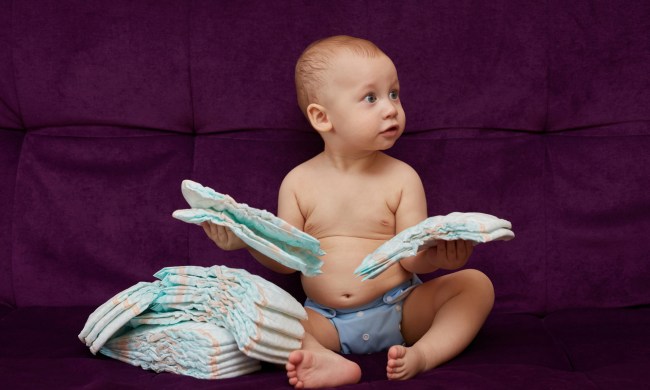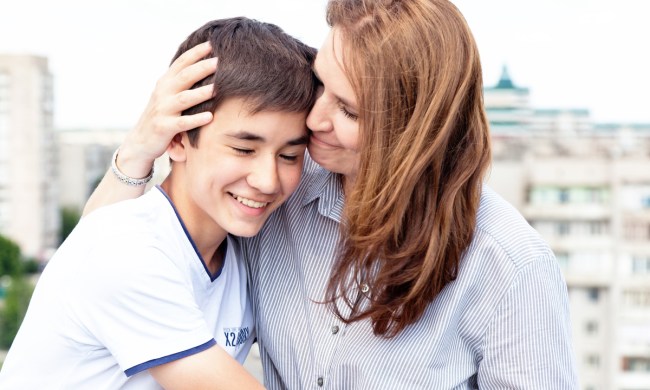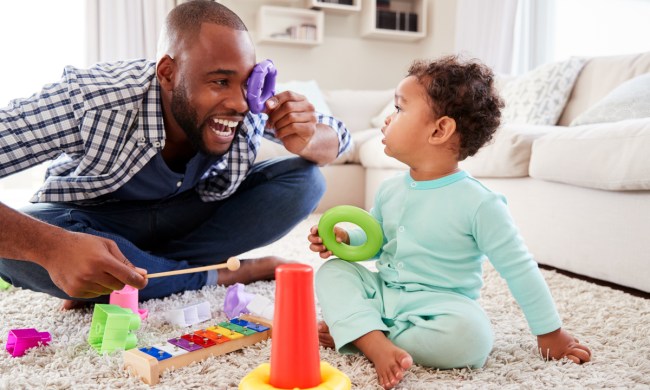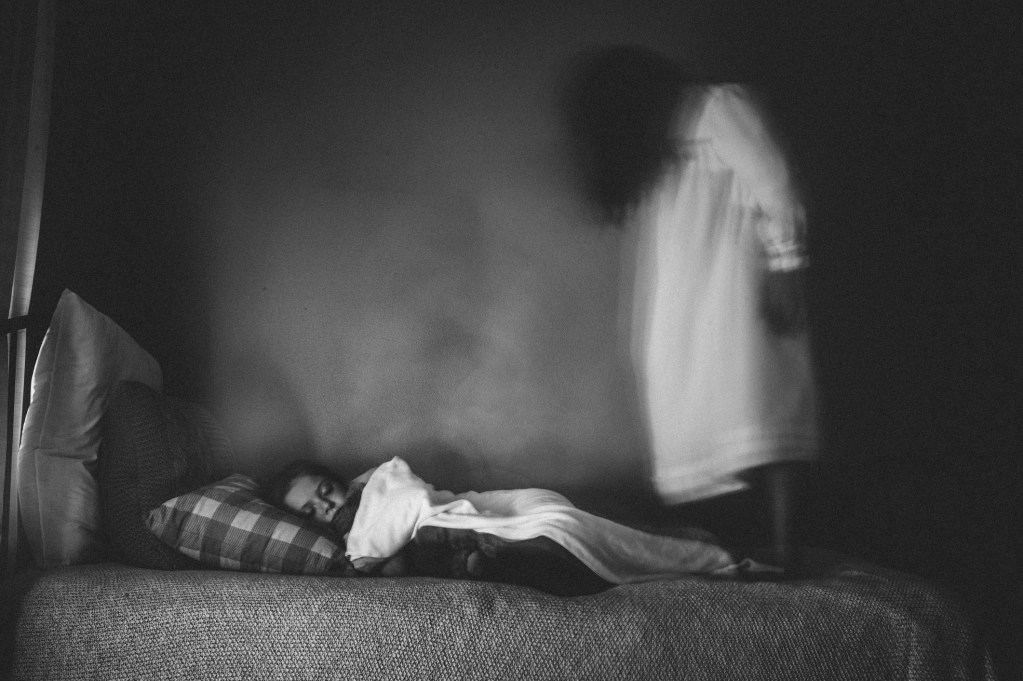
Many of us love to watch scary movies and are fascinated with the concept of ghosts and spirits. “I see dead people,” is one of the most iconic and chilling lines from The Sixth Sense, the classic thriller about a young boy who helps ghosts complete their unfinished business before moving on to the next realm. Although this was only a movie, many can’t help but wonder if people, especially children, have the ability to communicate with ghosts.
As we all know, real life can be way stranger than fiction. The internet is full of “true-life” encounters children have reportedly had with ghosts. Now, we all know how reliable the internet can be when it comes to information, so take the following with a grain of salt. And cue the Twilight Zone music.
But can children actually see ghosts? Some spooky tales might lead you to believe so.
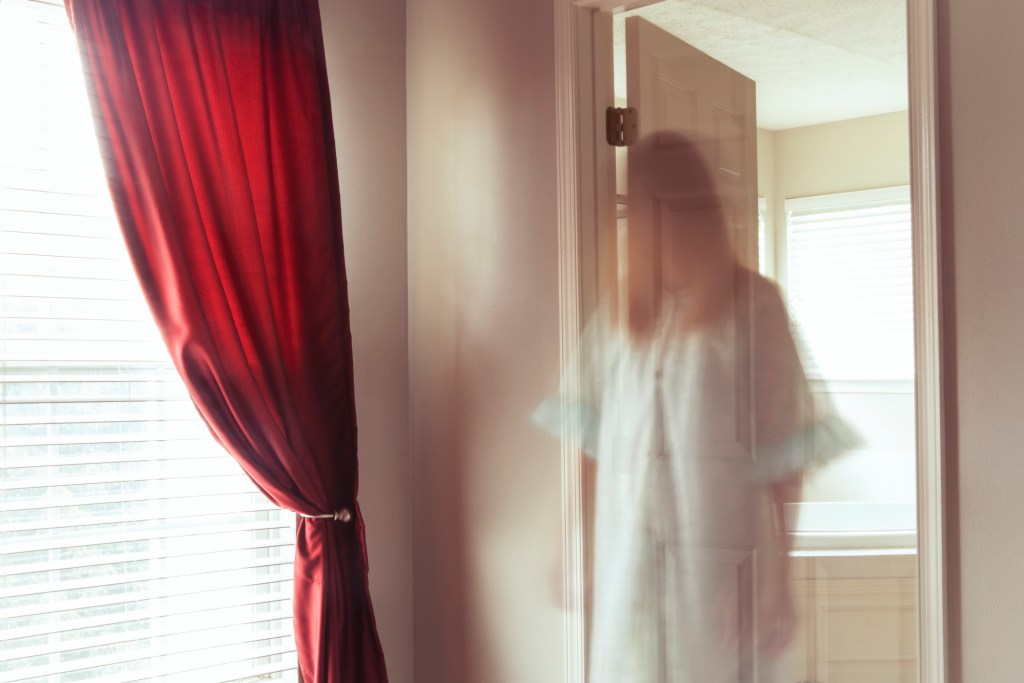
Real-life stories
A woman named Michelle shared a story on the website, The Every Mom. She said that her husband’s father passed away several years before their son was born. Her husband, she said, had always blamed himself for giving his father the flu that killed him. According to Michelle, neither she nor her husband had ever discussed him with their son, but one morning, he woke up and said, “Daddy, Papa Don wanted me to tell you he’s doing fine.” The boy went on to discuss his grandfather, even though he had never seen a photograph of him and knew nothing about him.
In another story found on Buzzfeed, a woman recounted that when her daughter was 3 years old, she began speaking of being woken in the night by a smiling man who kept tickling her feet. It must have been a dream, right? One day, the woman came across a picture of her grandparents on their wedding day. The daughter pointed at the picture of her mother’s father and said, “That’s him! That’s the man who tickles my feet!”
Are these children psychic? According to The Atlantic Paranormal Society, to a child, anything is possible and everything is real.
Not so fast, counters Jacqueline Woolley, Professor of Psychology at the University of Texas at Austin. “Kids really start to make a lot of clear distinctions between real and not real by their late-to-early threes,” she says. “For example, they know something is not real because it’s a toy or a picture.”
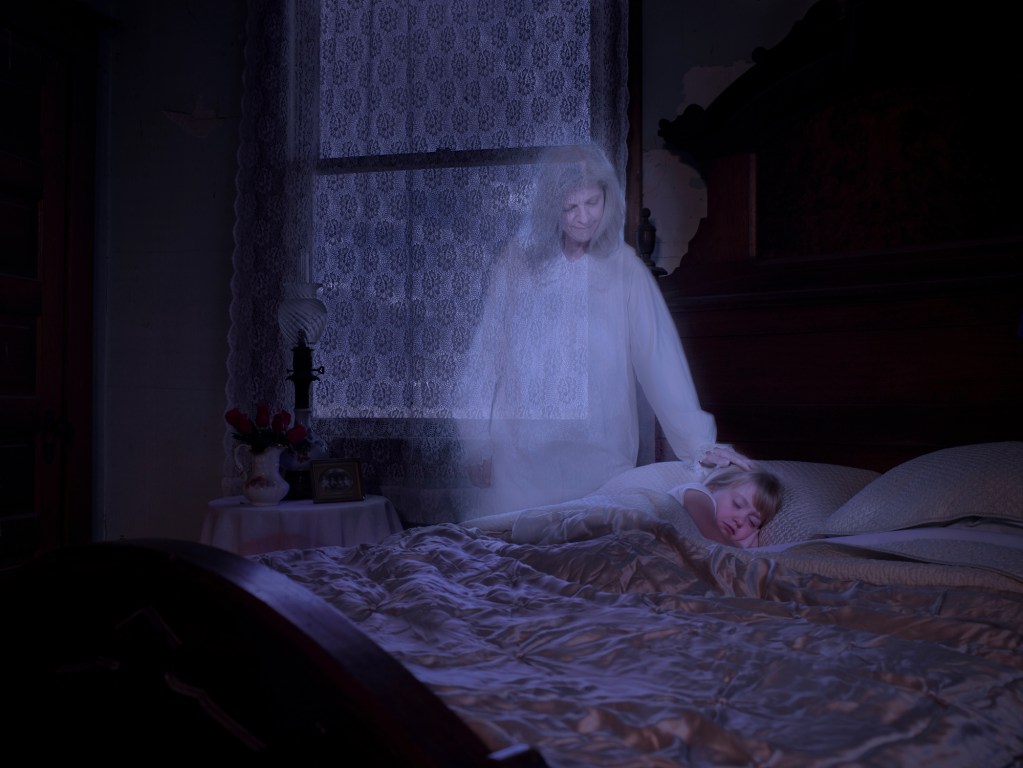
What is real and what is not?
As for stories about children who claim to have seen the ghosts of deceased relatives, Woolley does not consider it all that fantastical. “These (relatives) are people who were talked about within the family,” she says. “Parents may tell you they’ve never actually talked (directly to their kids) about this person, but children pay attention. These relatives probably came up in conversation at the dinner table, or their children overheard their parents talk about them, or they’ve seen pictures up on the wall or in a photo album. If you combine a child’s imaginative tendency with knowledge of distant relatives, I would be surprised if they didn’t quote-unquote see a ghost.”
There has long been a stigma around kids having imaginary friends or claiming to see ghosts. “We know that between a third and two-thirds of children have imaginary companions,” Charles Ferryhough, a psychologist at Durham University, who investigates the phenomenon of hallucinations, told The Washington Post. “Not too long ago, imaginary friends were considered a precursor to mental illness; now we know they’re a positive sign of healthy child development,” he said. “Now adults come to me concerned if their kid doesn’t have one.”
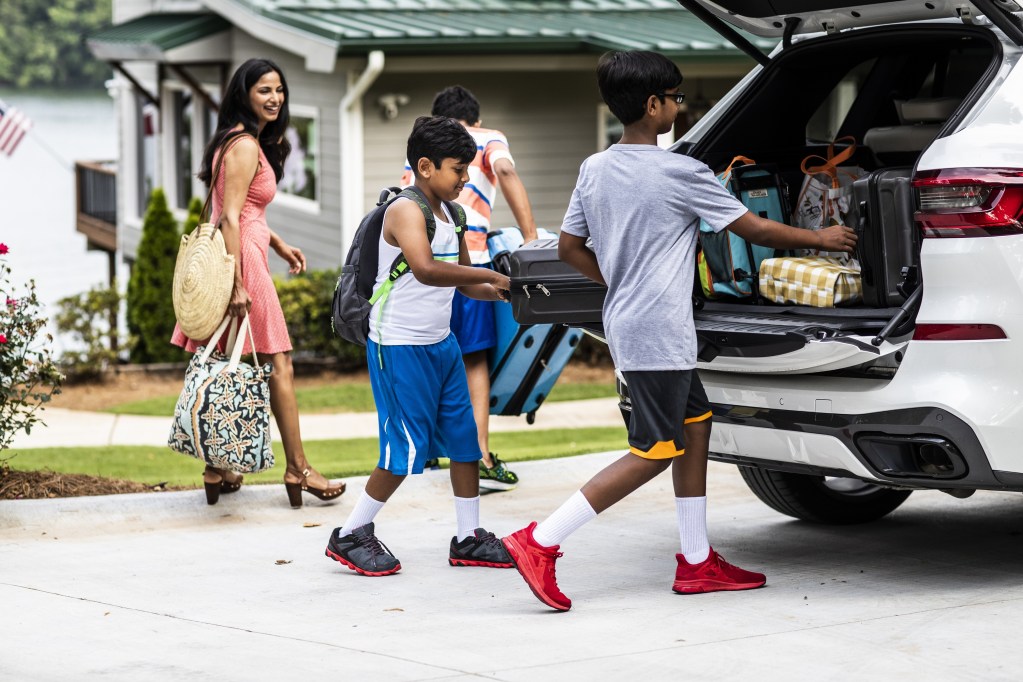
Culture may have an influence
This may be especially true in families with a culture of talking about spirits and ghosts. “There are plenty of adults who believe in ghosts, and if a child is growing up in a family where that point of view is part of the family culture, then that child is going to be much more likely to say that they’ve seen a ghost or had contact,” Woolley says. “In some (global) cultures, such as India, if a child claims to see, or to have been visited by the ghost of an ancestor, it is thought to be a positive thing. In the United States, generally, there is no age at which we think of ghosts in that way. We went to think of them as supernatural beings.”
Ghost stories, by their very nature, are eerie, but when they involve children, it ratchets up the “creepy” factor to 11. This is because children are innocent and vulnerable. Adults can also relate because whether it involves spirits hiding under the bed or in a closet, malevolent clowns, or spooky shadows on the bedroom walls, these tales evoke memories of what scared them as children.
But should parents be concerned if their child starts telling stories involving ghosts? First of all, realize you are not alone if the internet is any indication. Writing for the website Scary Mommy, Mary Katherine talked about her 2-year-old’ son’s reports of “the little girl who sleeps in our house,” whom he dubbed “Night Night Angel.” Mary Katherine immediately Googled “How to get rid of ghosts.” (We tried it, too, and it yielded 9,550,000 results).
She next sought commiseration from Facebook users and was “bombarded with stories,” she related. “Post-funeral sightings, historic house hauntings, you name it. One mother commented that her 3-year-old twins once sat down for a pretend tea party with a woman named Magdalena. No big deal, right? Well, Magdalena happened to be the name of their late great-great-grandmother who died two days before their birth. And a two-point creepy bonus? They poured her a cup of her actual favorite tea: vanilla rose.”
“I, personally, would think, ‘This kid’s got a great imagination,” Woolley says. “They might have heard a friend at school tell a similar story and decide to go home and try it themselves. Or they might have read a book about ghosts and think it would be cool to see one, so they tell their parents they’ve seen a ghost. A lot of times, kids will say what they want to be the case, as opposed to what really happened.”
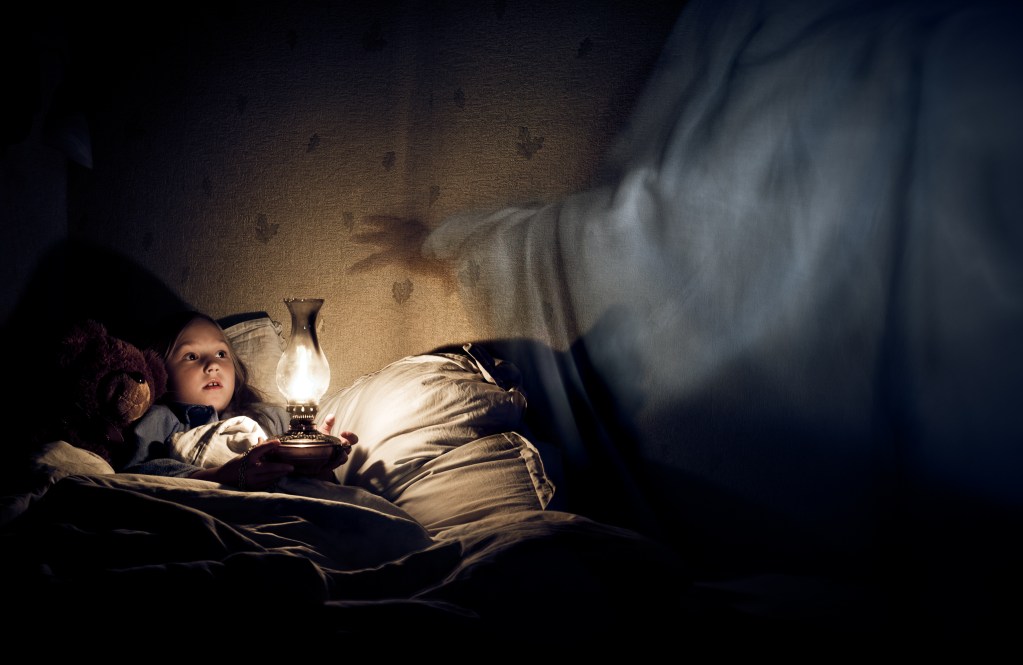
How to lower the fear factor
Woolley advises parents to not freak out or rush online to find a therapist if their child starts sharing stories about encountering a ghost. Communication with the child is key. “I would take the child’s lead,” she recommends. “I wouldn’t push it by asking the child every day about the ghost, because then you’re making a big deal of it. I personally don’t think children really do see ghosts, but let them bring it up, and when they do, ask the child more about the ghost: Where did you see it? What does it look like? What do you know about it? How do you feel about it? If a child says they like the ghost, then you’re good.”
But what if they say they don’t like the ghost and they want it to go away? There are strategies parents can use to reduce the fear factor. One such strategy comes not from her research into fantasy vs. reality as Director of the Children’s Research Center, a unit at the University of Texas at Austin, which focuses on child development. Rather, it comes from J. K. Rowling’s Harry Potter books, which introduced the Boggart, a shape-shifting non-being that could take on the form of a person’s worst fear. In the case of Neville Longbottom, his was professor Severus Snape. Neville mitigated his terror by imagining Snape in his grandmother’s clothing.
“There are ways to work with fears,” Woolley says. “It won’t do you a whole lot of good to tell the kids the ghost isn’t real because I do think they know that. It’s like seeing the movie, Psycho, and then being afraid to take a shower, even though you know full well there’s no one in your house.”
Woolley suggests parents take their cue from a former colleague, Marjorie Taylor, a now-retired psychology professor, who once wrote about how she worked with her own ghost-averse daughter. “She gave her daughter a little box and told her it contained a baby ghost that needed someone to take care of. Over the months, through taking care of it, the daughter lost her fear of ghosts.”
And let’s not forget such tried-and-true strategies as wielding a can of so-called monster or ghost spray to spray under beds and in closets at bedtime.
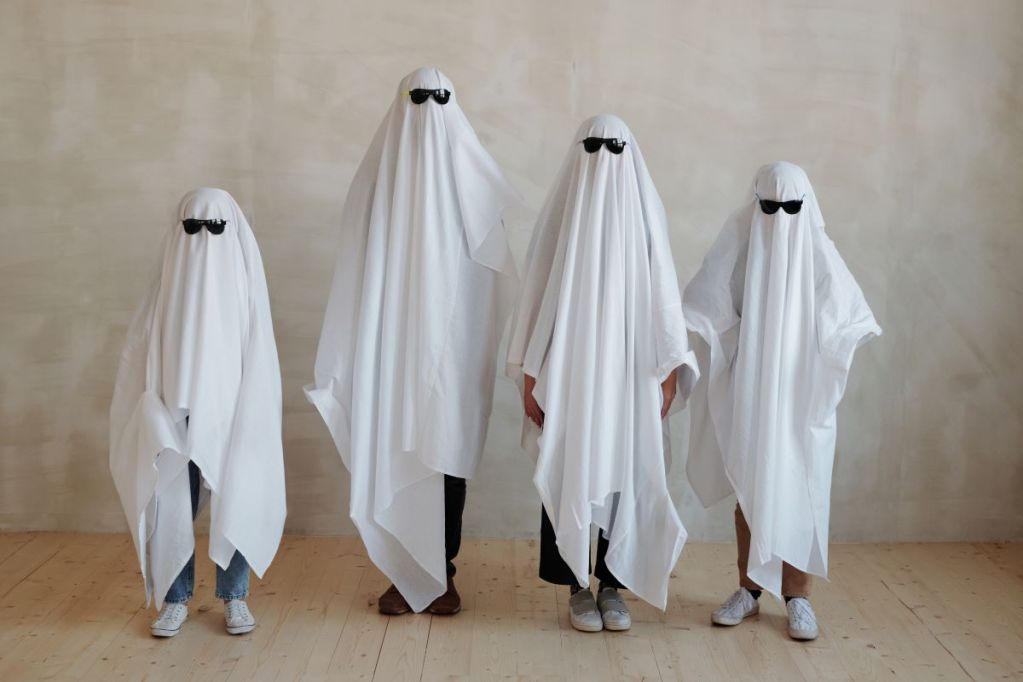
Why are ghost sightings so common among children?
A quick internet search will turn up hundreds, if not thousands of stories detailing paranormal encounters involving children. Aleta G. Angelosante, PhD, a child and adolescent psychiatrist at NYU Langone explained to Refinery29 that one reason why so many children may experience ghost sightings is because they are simply not able to distinguish between what’s real and what isn’t. “Children are hard-wired to learn through imaginative and pretend play, and therefore they can slip between reality and fantasy much more easily than adults,” she explained. “While an adult might dismiss something they see quickly out of the corner of their eye as “nothing” or have a reality-based explanation, children might insist they saw a ghost or a fairy or some other creature,” she added.
Whether you believe your child has seen a ghost or not will probably come down to your personal beliefs. Woolley speaks of a phenomenon called confirmation bias: We tend to pay attention to things that support our beliefs and ignore things that do not. If someone believes in ghosts and wants to see a ghost, chances are, they will interpret a noise, a shadow, or a vision as a ghost.
But is she open to the possibility of ghosts? “I’m not,” she admits, “but I think it’s important to never close the door on everything. I don’t think we know everything about the world, but at this point, I’m pretty certain that they don’t exist.”
